No, we aren’t opening a chemistry lab in the archives– but we are moving the archives into STEM (Science, Technology, Engineering and Mathematics) classrooms. Davidson’s liberal arts curriculum has always included courses that fall into the STEM rubric. Chemistry, physics, mathematics, and natural philosophy classes stood alongside Greek, Latin, rhetoric, religion, and political economy courses in filling students’ days and heads from the college’s earliest years.
Still, it is relatively new for the Archives to play a role in these classes. Other parts of the curriculum– English, Sociology, Education, Theatre, even Africana Studies are our more traditional partners. With the Under the Lake project, Environmental Studies students both used the archives and added to our research.
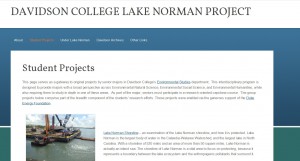
Website for Environmental Studies research projects.
http://davidsonarchivesandspecialcollections.org/uln/student-projects/
Most recently we have worked with Mathematics, Computer Science and a digital studies class.
For Computer Science 362, the archives provided statistical data derived from our Statistics and Class Events database (Hint: if you want to do a search by year use the format 1915-1916). We gave them tuition costs, number of faculty and number of students for each year, including for some years the number of students by class. They took the data and explored the kinds of questions that can be asked and learned out to use different kinds of charts and plots to visualize the data. Below are some of the class examples:

Scatter plot graph on Davidson Dropout Percentage by Academic Year and Class Year created by Courtney Cochrane
Archives staff were invited to hear presentations by the students. We all learned that some of the comparisons provided no useful historical insights, some pointed to anomalies worth further exploration, and some to bad or missing data. We were inspired to think more about numbers in archives and future CS362 projects.
Over the last 2 years, students in Finite Math collected data from archival sources and created information graphic that highlighted aspects of Davidson’s history. They used alumni catalogs, yearbooks, sports media guides, and catalogs to track Davidson enrollment, student home states, percentages of athletes, and tuition.
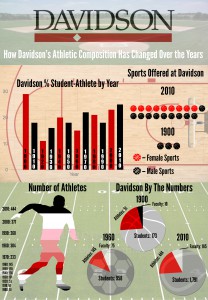
Poster using athletic history data researched and designed by math students Ryan Lowe, Peyton Aldridge, and Jack Gibbs.
This last week students in DIG 101 used a variety of documents from the archives to learn about scanning and optical character recognition- and in the process learned a little bit about Davidson culture in the 1920s and 1940s and worked with some early handwritten stories by William Styron. At Around the D, we’re doing our best to connect the past and present and to cover the curriculum in the process
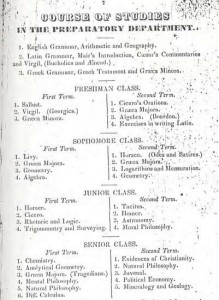
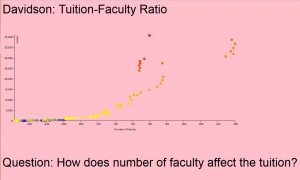
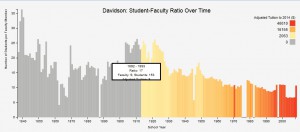
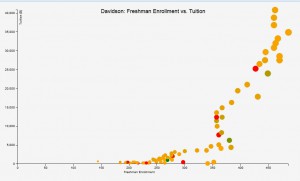
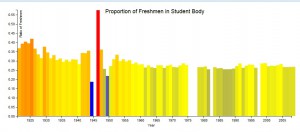
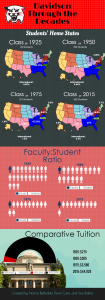

Speak Your Mind